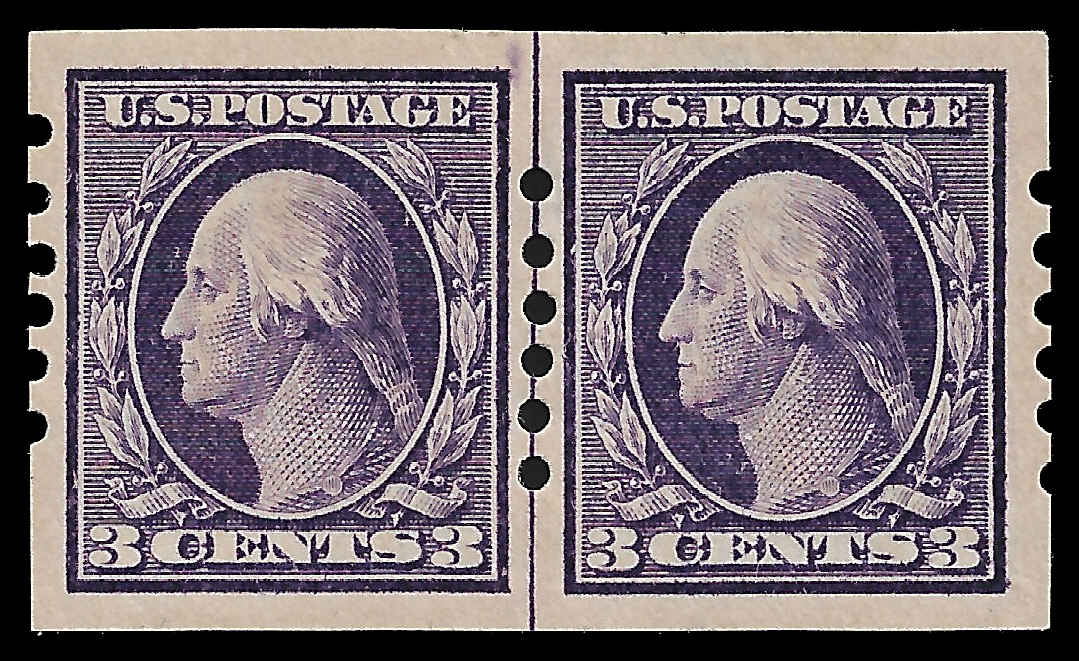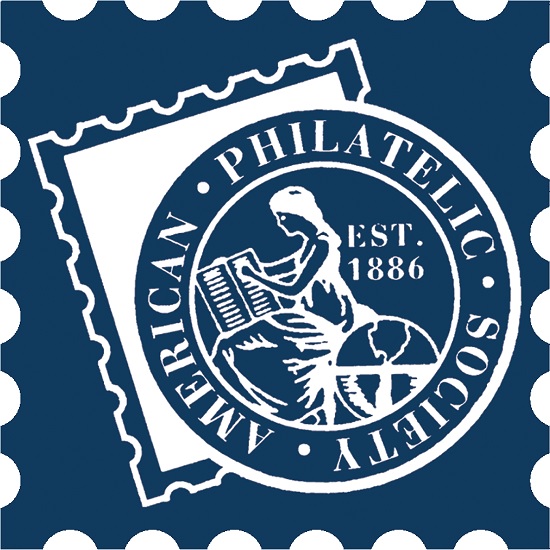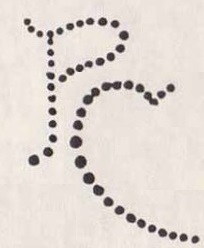Riverside Stamps

Return to Home Page or Altered and Faked stamps Index Page
|
The contents of
this website is copyright protected. Any suggestions for additions or changes are always welcome. |
Suspect Scott #345 Unused Guide Line Pair with Schermack Type II perforations. (5/10/20)

Scott #345, Double Line Watermarked, Imperforate, Flat Plate Printed Issue (3`˘ deep violet, design A140 Type I). Imperforate sheets of 400 were sold to the Schermack Mailing Machine Co. of Detroit Michigan some time in 1908 -09 where they applied the then current Type II perforations. According to the Guide To united States Vending And Affixing Machine Perforations 1907 -1927 by Steven R. Belasco (page 24) was perforated for collectors only, it is a very scarce issue that is unknown used on cover, as blocks or paste-up pairs but is known as guide line pairs. This issue can be faked by adding counterfeit Type II perforations to #345 guide line pair or by adding counterfeit Type II perforations to #345H guide line pair. Catalog value is: $1,650 as a guide line pair.
The watermark is an inverted reversed double line “S” at the left and a corresponding “U” at the right.
|
Natural Light |
Enhanced |
The suspect’s height is just over 25.5mm at the left, 25.5mm in the middle and just under 25.5mm at the right. The top edge is wavy while the bottom edge is more straight. The two edges do not have the look or feel of genuine coil.
Conclusion: In my opinion the suspect is a Scott #381 with the left and right perforations trimmed off.
The Guide To United States Vending And Affixing Machine Perforations 1907 -1927 by Steven R. Belasco (page 22) describes the dimensions of the Schermack Type II perforations as follows:
"The Schermack Type II perforations has six medium sized holes 1.55mm in diameter with uneven spacing between the holes. The spacing between the holes are, from top to bottom, 1.2mm, 1.1mm, 0.55mm, 0.85mm and 0.85mm. None of the Type II stamps are known in blocks. Since it is believed that all these stamps were stripped into coils before being perforated, they should not have hand-cut top or bottom margins."
The next thing to look at is the size of the six holes which should be 1.55mm in diameter. The following measurements are for the six holes from top to bottom:
- 1.438mm
- 1.375mm
- 1.417mm
- 1.354mm
- 1.396mm
- 1.375mm
As can be seen the sizes of the six holes are way off the 1.55mm measurement stated in Blasco’s book.
The next thing to look at is the spacing between the holes. The following measurements are from the top to bottom:
| Between Holes: | Should Be (mm) | As Measured (mm) |
| 1 and 2 | 1.20 | 1.40 |
| 2 and 3 | 1.10 | 0.96 |
| 3 and 4 | 0.55 | 0.69 |
| 4 and 5 | 0.85 | 0.92 |
| 5 and 6 | 0.85 | 1.00 |
As can be seen the spacing between holes on the suspect do not match up with the hole spacing as described in Blasco’s book.
Conclusion: In my opinion the suspect is a Scott #345 unused guide line pair with counterfeit Schermack Type II perforations added to the left, middle and right sides.
Reference material used:
- The Expert's Book. A practical guide to the authentication of United States stamps. By Paul W. Schmid.
As always comments and suggestions are always welcome.
To Contact Riverside Stamps:
Email:
Mike Girard - Owner / Operator / Web Master:
g1rardmn1099@comcast.net
|
I am a member of the American Philatelic Society
|
I am a member of the United States Stamp Society  USSS #: 16733 Visit the United States Stamp Society Website at www.usstamps.org |
I am a member of the Perfins Club
|

